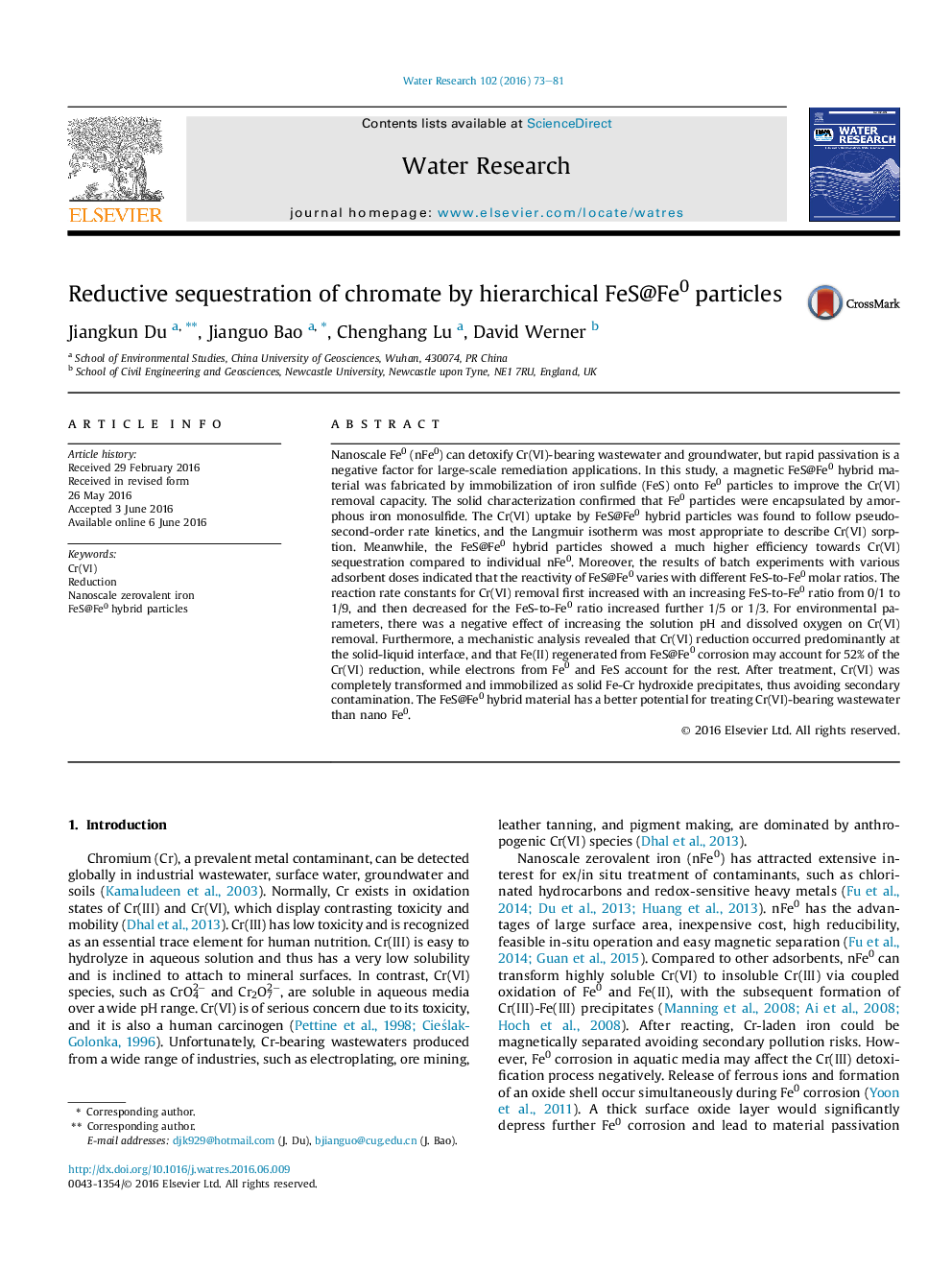| کد مقاله | کد نشریه | سال انتشار | مقاله انگلیسی | نسخه تمام متن |
|---|---|---|---|---|
| 4480840 | 1623066 | 2016 | 9 صفحه PDF | دانلود رایگان |
• A novel FeS@Fe0 material with hierarchical structure was fabricated.
• FeS@Fe0 showed much higher reactivity than individual nFe0 towards Cr(VI) sequestration.
• The coverage of FeS could accelerate multi-electron transfer from Fe0 core to sorbed Cr(VI).
• Cr(VI) was completely converted to Cr(III) and immobilized in the form of Fe-Cr hydroxides.
Nanoscale Fe0 (nFe0) can detoxify Cr(VI)-bearing wastewater and groundwater, but rapid passivation is a negative factor for large-scale remediation applications. In this study, a magnetic FeS@Fe0 hybrid material was fabricated by immobilization of iron sulfide (FeS) onto Fe0 particles to improve the Cr(VI) removal capacity. The solid characterization confirmed that Fe0 particles were encapsulated by amorphous iron monosulfide. The Cr(VI) uptake by FeS@Fe0 hybrid particles was found to follow pseudo-second-order rate kinetics, and the Langmuir isotherm was most appropriate to describe Cr(VI) sorption. Meanwhile, the FeS@Fe0 hybrid particles showed a much higher efficiency towards Cr(VI) sequestration compared to individual nFe0. Moreover, the results of batch experiments with various adsorbent doses indicated that the reactivity of FeS@Fe0 varies with different FeS-to-Fe0 molar ratios. The reaction rate constants for Cr(VI) removal first increased with an increasing FeS-to-Fe0 ratio from 0/1 to 1/9, and then decreased for the FeS-to-Fe0 ratio increased further 1/5 or 1/3. For environmental parameters, there was a negative effect of increasing the solution pH and dissolved oxygen on Cr(VI) removal. Furthermore, a mechanistic analysis revealed that Cr(VI) reduction occurred predominantly at the solid-liquid interface, and that Fe(II) regenerated from FeS@Fe0 corrosion may account for 52% of the Cr(VI) reduction, while electrons from Fe0 and FeS account for the rest. After treatment, Cr(VI) was completely transformed and immobilized as solid Fe-Cr hydroxide precipitates, thus avoiding secondary contamination. The FeS@Fe0 hybrid material has a better potential for treating Cr(VI)-bearing wastewater than nano Fe0.
Figure optionsDownload high-quality image (281 K)Download as PowerPoint slide
Journal: Water Research - Volume 102, 1 October 2016, Pages 73–81
